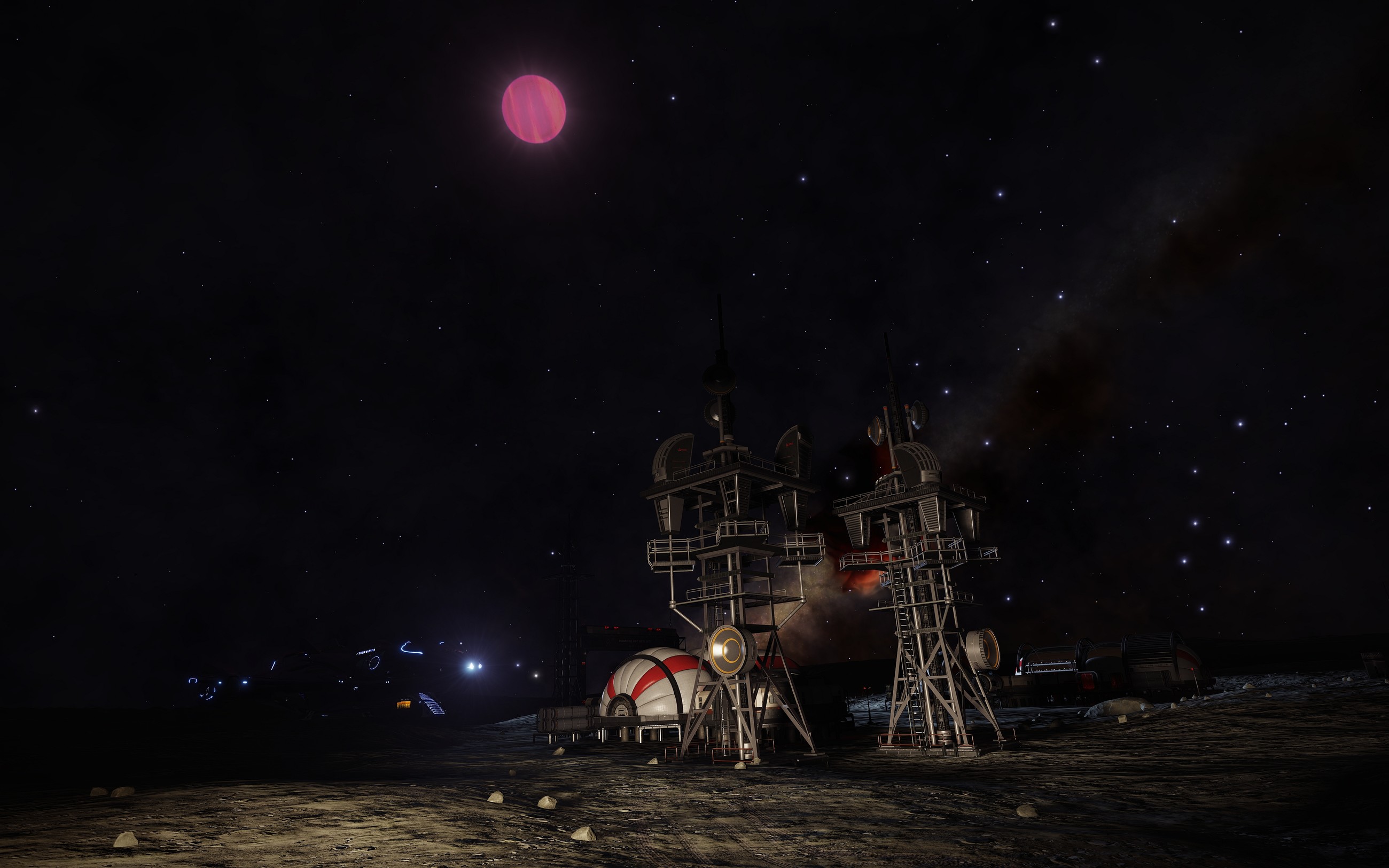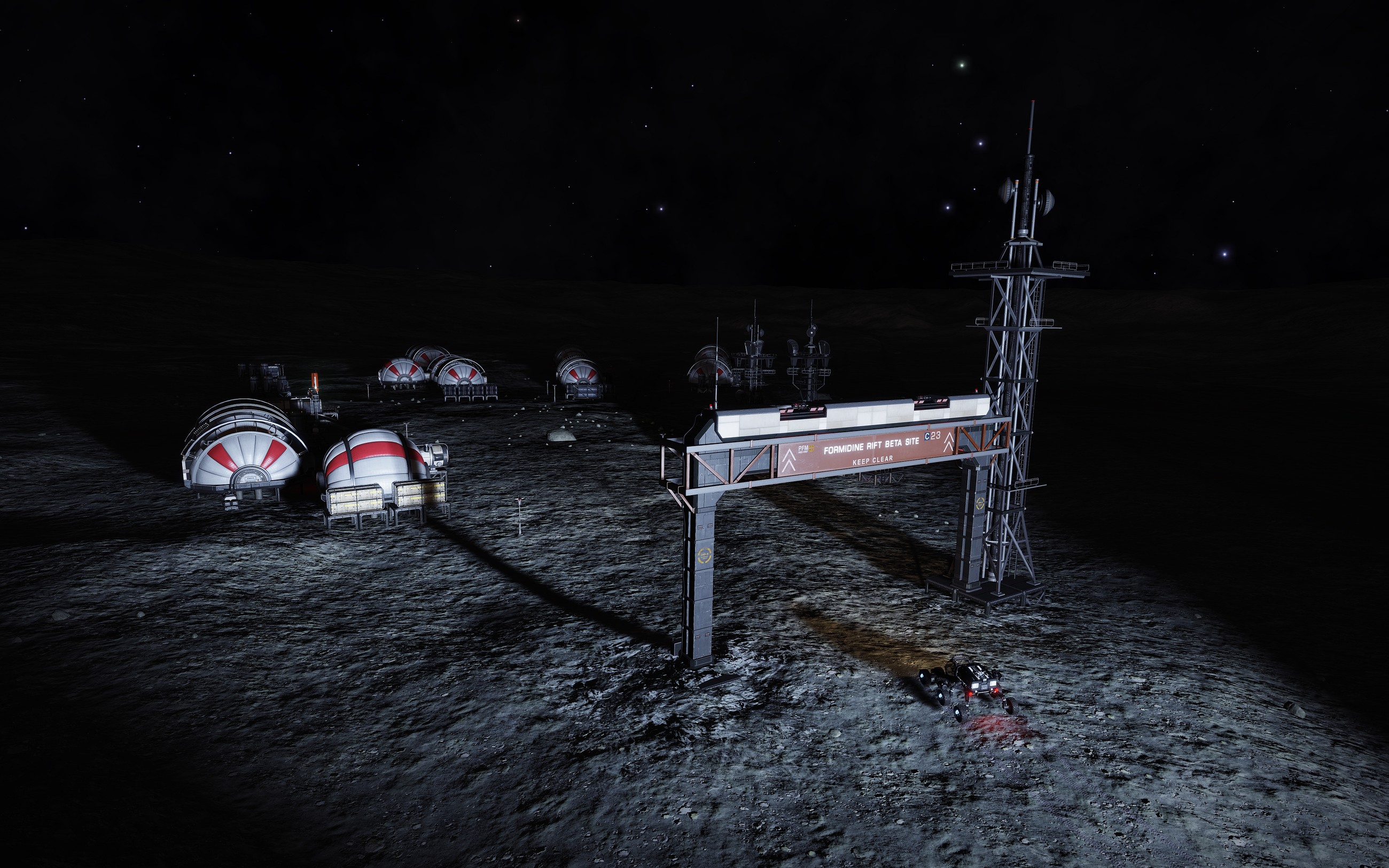Formidine Excursion: P3
15 May 2019Nullvektor
Landed at Beta Site camp. This place has been pretty well picked over by previous visitors, but there's something here that tickled my curiosity. Indulge me.Near the entrance to the camp is an array of two towers. These are oriented NW and SE, with the corners of their square bases pointing in the cardinal directions. There are three types of antennas mounted on these towers, and for most intents and purposes, they are identical; my text will explain their differences.

The lower antennas are two lens-type microwave receiver antennas. These are mounted NW and NE on the NW tower, and SW and SE on the SE tower. These are fixed positions. The top antennas are two reflector-type microwave receiver antennas that are mounted N-S on the NW tower and E-W on the SE tower.
The middle antennas are two C-band horn microwave receivers with the feed horns rotating around their vertical axes. The NW tower's horn antennas rotate faster and slower than those on the SE tower, which rotate at a moderate rate.
Given: microwave transmissions work primarily on line-of-sight, and when geographic obstacles like the horizon get in the way of the signal, these can be surmounted by bouncing the signal off the atmosphere with a process called tropospheric scattering. This planet has no gaseous atmosphere, and it is unknown if the exosphere of this planet-- composed of planetary dust-- is sufficient to effect tropospheric scattering. Therefore, it is reasonable to assume that the fixed antennas are set to receive signals from a known point. This point either exists within the line of sight of the antennas or is at a sufficient altitude above the local geographic features.
The rotating C-band antennas posed more of a curiosity. Each array of antennas rotate clockwise and counter-clockwise. Their varying rotation rates suggest a search pattern, from coarse to fine. This is adequate for triangulation, albeit the antennas might achieve better results if they were spaced farther apart. Whereas these antenna may provide rudimentary bearing and range information in the horizontal plane, they do not provide any information about the vertical plane, so these are inappropriate for targeting and fire control. Rather, these appear to be an element of a listening post set to detect microwave transmissions in the 4.0 to 8.0 gHz range, with what may be a short-range communication and positioning capability.

In any event, this site is well and truly abandoned, with little of salvageable value. After the survey of this system is complete, the MEC Eostre will head back to the bubble and the test of the as-yet-unnamed Beluga will begin.
